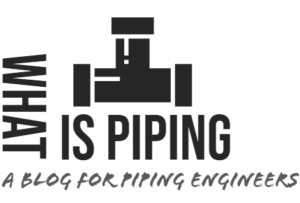Dynamic Pipe Stress Analysis is a specialized engineering evaluation used to assess how piping systems respond to time-dependent (dynamic) loads, such as:
- Seismic activity (earthquakes)
- Water hammer (fluid transients)
- Wind or vibration loads
- Pulsating pressure or flow
- Equipment vibrations (e.g., pumps, compressors, turbines)
Key Characteristics of Dynamic Analysis:
- Time-dependent: Unlike static stress analysis, dynamic analysis considers forces that vary with time.
- Transient and steady-state effects: It may account for one-time events (e.g., seismic shock) or repeated, cyclical loads (e.g., harmonic vibration).
- Modal behavior: Often involves calculating natural frequencies and mode shapes of the pipe system to see if it could resonate under certain conditions.
Types of Dynamic Analysis:
- Modal Analysis: Determines the natural frequencies and mode shapes of the system.
- Response Spectrum Analysis: Used for seismic analysis; calculates maximum response using a predefined spectrum.
- Time History Analysis: Simulates the time-varying nature of loads (e.g., a recorded earthquake waveform).
- Harmonic Analysis: Evaluates the system’s behavior under sinusoidal (vibrating) forces.
- Force Spectrum Analysis: Used for flow-induced or acoustic-induced vibrations.
Purpose of Dynamic Analysis:
The goal is to ensure:
- The integrity of the piping system under dynamic events.
- Compliance with codes and standards (e.g., ASME B31.1, B31.3, ISO 14692).
- Prevention of fatigue failure, excessive deflection, or joint failure.
Tools used for Dynamic Pipe Stress Analysis:
Dynamic pipe stress analysis is typically performed using specialized software like:
- CAESAR II
- AutoPIPE
- ROHR2
- Start-PROF
- PIPESTRESS
- Caepipe, etc
Interview Questions on Dynamic Pipe Stress Analysis
All advanced pipe stress analysts are expected to learn dynamic pipe stress analysis to study the behaviour of piping systems under dynamic loading conditions. Various questions related to dynamic analysis are asked during interviews to decide the capability of piping stress engineers. The following section lists some of the frequently asked interview questions related to dynamic pipe stress analysis.
- Explain the term degree of freedom with an example. Why is the word “independent” used in the definition?
- Explain the terms mass matrix and stiffness matrix.
- What is meant by mode shape?
- Explain the meaning of each column of a matrix of mode shapes (the PHI matrix).
- What is modal orthogonality, and what is its use?
- Explain how the phase angle changes with the damping ratio.
- Explain the key differences between overdamped, underdamped, and critically damped systems.
- How does damping affect response?
- What is the key difference between lumped and consistent mass matrices?
- Explain the calculation and significance of the term mode participation factor (also referred to as mass participation factor)
- Explain how the mass% report is generated in Caesar II and what should be the target % of mass in the X, Y, and Z directions.
- Can an X-direction excitement result in the Z mass getting excited?
- Explain the term “response spectrum.”
- Explain what is meant by DLF (first define DLF) spectrum, pseudo velocity spectrum and pseudo acceleration spectrum.
- Time history analysis is required to generate the response spectrum – is this true? Support or challenge these using arguments.
- What is meant by modal, spatial, and directional combination methods?
- Explain the strengths and weaknesses of various combination methods.
- What is meant by the 100-40-40 rule?
- Explain the meaning of the terms force set and time history definition.
- Explain how a DLF spectrum is generated from a time history
- Explain the possible outputs from harmonic analysis.
- Explain when you should use and not use harmonic analysis
- Explain the meaning of the term frequency-phase pairs.
- Make a planar model of a piping system (say X, Y plane).
- Explain the difference in time history input between a force spectrum analysis and a time history analysis.
- Can you perform response spectrum and time history analysis for slug flow?
- What are the limitations of time history analysis in Caesar II?
- Explain why imaginary numbers are used in dynamic analysis when a physical problem is in real space
- Explain how you need to arrive at the input for the time step and load duration in time history analysis.
- Explain how to decide whether the modal combination should precede spatial or vice versa.
- Explain the terms missing mass and ZPA. How is the missing mass concept used in seismic response spectrum analysis?
- Explain the possible outputs from a time history analysis in Caesar II.
Online Course on Dynamic Analysis
Are you looking for the answers to the above questions? Then you can enroll in the following online course that explains all the concepts to help you answer all the above interview questions.
